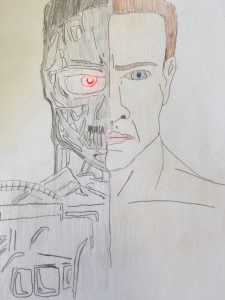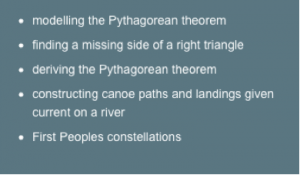Information Visualization Tools allow students to engage and interact with technology to further their math or science knowledge and understanding. They also allow the invisible to become visible. One common area where misconceptions occur in science is with simple and parallel circuits (Brna, 1988). Many students have difficulty taking their knowledge of circuits from linear worksheet diagrams into system and simultaneous projects. To address these misconceptions, I have combined the Info-Vis PhET for simple circuits along with a tangible paper circuit lesson plan. Finkelstein, Adams, Keller, Kohl, Perkins, Podolefsky and Reid (2005) found that students were very successful transferring simulated circuits to real-life situations.


Goals:
- Students will be able to demonstrate basic knowledge of simple circuits and parallel circuits.
- Students will have an opportunity to use their knowledge of simple and parallel circuits in the creation of a paper circuit card
Materials:
- Computers with PhET Simple Circuit Construction Simulation – https://phet.colorado.edu/en/simulation/circuit-construction-kit-dc
- Paper Circuit Materials: Cardstock, 3mm or 5mm LED lights, 3v coin cell battery, paper clip, copper tape, other paper materials as needed (coloured paper, tissue paper, recyclables, etc.)
STEM Activity – 5 Steps
Step 1 – Access prior knowledge by reviewing simple and parallel circuits. Address any misconceptions that arise.
Step 2 – Generate – Students will generate a hypothesis about simple or parallel circuits and the flow of electrons through the circuit.
Step 3 – Evaluate – Students will evaluate their hypothesis using the PhET simulation and share out their findings. What did students notice using the simulation?
Step 4 – Modify – Based on their experiences with the PhET simulation, students will modify their thinking. They will begin to outline their construction of their paper circuit using the information gained from the simulation. Transferring the knowledge from the simulation to the real-world application (the paper circuit) card and go back through T-GEM cycle using real-world circuit.
Step 5 – Extend – Students will extend their knowledge by adding a switch to their circuit.
References
Brna, P. (1988). Confronting misconceptions in the domain of simple electrical circuits. Instructional Science, 17(1), 29-55.
Finkelstein, N.D., Perkins, K.K., Adams, W., Kohl, P., & Podolefsky, N. (2005). When learning about the real world is better done virtually: A study of substituting computer simulations for laboratory equipment. Physics Education Research,1(1), 1-8. Retrieved from https://journals-aps-org.ezproxy.library.ubc.ca/prper/abstract/10.1103/PhysRevSTPER.1.010103


